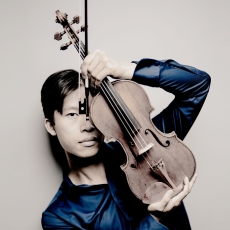Kerson Leong - Ysaÿe: Six Sonatas for Solo Violin - Gramophone
‘Perhaps the most important contribution to the solo violin repertoire since the writings of Bach and Paganini’, writes Kerson Leong in his booklet note, but listening to his ardently expressed readings of these six masterpieces – each written (in 1923) with a different violinist in mind – I wondered whether he should have stopped at Bach, the inspiration behind the first sonata (for Joseph Szigeti). Much as I relish the Paganini Caprices, Ysäye’s achievement factors in far more gravitas than does Paganini. That’s not only because these sonatas are larger-scale pieces but because their expressive reach is wider, the third (dedicated to Enescu) calling on technical and stylistic aspects of music that the great Romanian will, or might, have played – Brahms, Elgar, Bach and Tchaikovsky, for example, not to mention prophesying Korngold. Leong drives an animated course from the doleful opening to the bravura finale, ratcheting up the tension as he goes.
Approaches to this music vary widely, from Tai Murray (Harmonia Mundi, 5/12), who focuses the more mystical aspect of the third sonata, to Thomas Zehetmair (ECM, 1/05) and Leonidas Kavakos (BIS, 1999), who underline the surprise elements of Jacques Thibaud’s sonata (the second), the opening taking in a fragment of Bach’s E major solo violin Prelude before breaking off, marking a brief pause then bounding back at full force. We’re soon faced with the work’s ‘obsession’, the ‘Dies irae’ motif, which dominates throughout. Rather than push for maximum dynamic contrasts, Leong is lighter, more playful, more sinister even, since he refuses to overplay the ‘death’ card. His tone in the ‘Malinconia’ middle movement is especially beautiful but for me the album’s highlight is Fritz Kreisler’s sonata, the fourth, which in style harks back to earlier masters, much as Kreisler himself did with his turn-of-the-last-century Baroque spoofs. The second movement is a Sarabande that opens to arpeggiated pizzicatos (memories of Schumann’s Second Sonata), superbly played by Leong – such immaculate chording – the finale, an elegant bravura piece.
The opening of the fifth sonata (for Mathieu Crickboom) could as well be a page from an unknown mature Bartók quartet, so otherworldly are its harmonies. Manuel Quiroga’s sonata, the last in the set, ends with a playful habanera, which Leong seems to relish. As to where Kerson Leong stands in the comparative stakes, fairly near the top, that’s for sure – his version could be a happy first choice for any discerning listener – though as with Paganini’s Caprices, Zehetmair is more overtly provocative.

